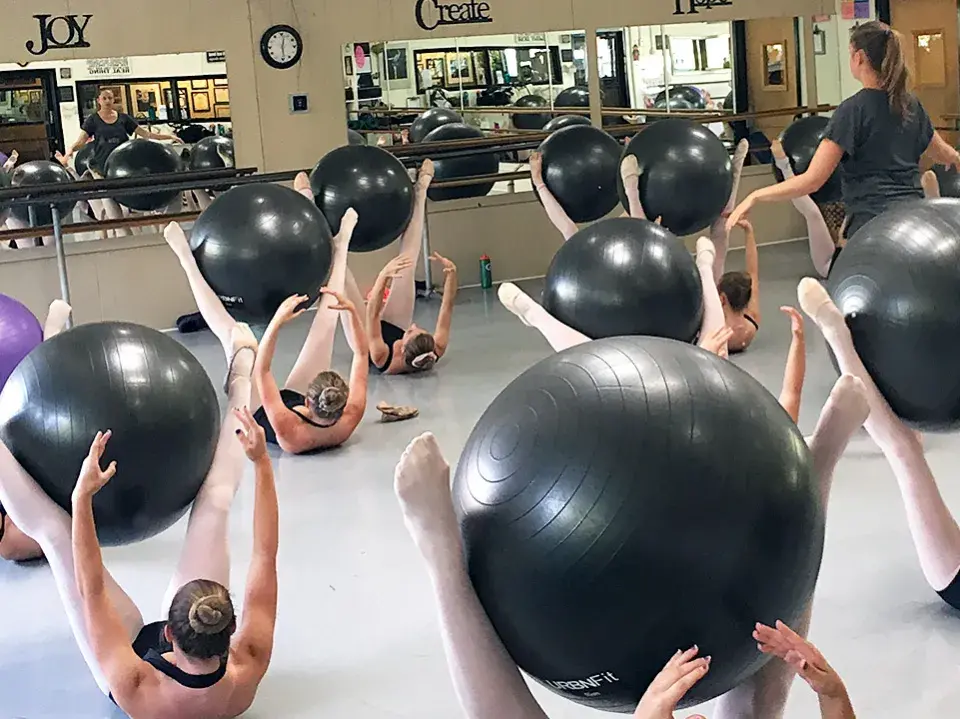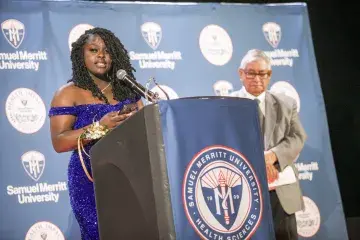Physical Therapist for Star Dancers and Olympic Hopefuls

Aimee Martel, DPT ’07, knows the injuries that dancers face—she used to be a dancer herself. Now she focuses her physical therapy practice in Walnut Creek on the needs of adolescent recreational dancers and works with professional companies like Alonzo King’s Lines Ballet and ODC/Dance. Earlier this year, she added a new job title: physical therapist to the U.S. National Artistic Swimming Team—what used to be called synchronized swimming. She’s in Barcelona, Spain, with the team this week for the world championships as they make their bid for the Tokyo Olympics later this summer.
How are dance and physical therapy connected for you?
I grew up dancing, mostly ballet. My dance teacher was really good at explaining how our bodies were working, and I was always interested in the posters of skeletal and muscular anatomy she had in the studio. When I was in college, I got a job as a physical therapy aide, and after working with great PTs there, I decided to become one myself.
Why focus on physical therapy for dancers?
Ballet is basically a different language. When dancers say they have trouble or pain doing ronde de jambes, most PTs don’t know what that means. When I was working at an orthopedic PT clinic in San Diego, I’d usually get the dancer referrals since I speak their language. I understand what parts of the body are used when doing different dance movements. After my daughter was born, I moved back to the Bay Area and opened my own practice with a focus on dancers.
Any tips for helping dancers stay healthy?
I’ve got two tips for dancers to mitigate some of the most common injuries to hips, knees, ankles, feet, and lower backs.
- The first is about stretching. When I was young, we’d warm up by stretching on the floor. Now science is telling us that doing a cardio warm-up with dynamic stretches better prepares our bodies for dancing.
- The second is that pain when dancing is not normal. You can be uncomfortable, tired, or sore, but any pain that lasts for more than two days is not normal. Dancers are terrified of being told not to dance—it’s like telling them not to breathe—but what they don’t understand is that the sooner they get help, the sooner they’ll feel better. I can work with them to change what they’re doing so they may not have to stop dancing completely while they heal.
What stands out about your time at SMU?
I learn best by doing, so the emphasis on clinical rotations was really important to me, and it’s one of the reasons I chose SMU. Having the opportunity to try PT in different settings helped me narrow down what I wanted to do with my career, and I landed on specializing in orthopedic PT.
How did you connect with the National Artistic Swimming Team?
A professional friend is the team doctor and recommended me, when the team decided to look for a physical therapist.
Why artistic swimmers?
I quickly realized that there is a huge crossover between dancers and artistic swimmers. Their injuries are surprisingly similar because of the extreme range of motion required to do their sport.
What advice do you have for physical therapists branching out into a new specialty?
Just say, “Yes,” and figure out the rest later. Leave your ego at the door and learn all you can about the sport. I do that by talking to the athletes, asking a ton of questions, and watching them live and on video. I realized I have more relevant experience than I initially thought. It’s been a really fun experience working with the artistic swimmers, and I hope they qualify for the Olympics!


